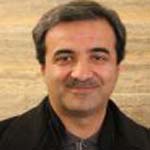A Temporal-spatial Analysis of Heat Island of Urmia City using Remote Sensing and GIS
UHI (Urban Heat Island) describes the phenomenon of temperature change in urban areas than their surroundings such as bare lands, gardens. Its effects are: increasing energy and water consuming, escalation of air pollution and intrusion on thermal welfare (Hashemi et al., 2019). Different researches about UHI, have assessed the effect of one or several factors, mainly land use, on the escalation of surface and sensible temperature. There are many researches about this issue. In one case in Macedonia, Skopje, heat island was assessed by using of NDVI index. The results indicated NDVI index was effective in weakening heat island and NDBI index had positive correlation with surface temperature which shows manmade areas have effects on heat island intensification (Kaplan et al., 2018). RS (remote sensing) makes it possible to assess all aspects of UHI as a hazard through preparing high quality satellite images. GIS (geographical information system) does too by preparing database, uniform methods, analysis and producing maps. The objective of this paper is temporal-spatial analysis of heat island of this hazard to recognize the UHI places in relation to land uses. This analysis helps urban managers to know more about spatial requirements in city and the importance of proper places (green lands and parks) to moderate urban temperature.2. Study Area Urmia city is the central district of Urmia county in the center of west Azerbaijan province in Iran. The city has been located in the distance of 18km from Urmia Lake. The city is located in 37 ºN latitude and 45 ºE longitude. Its climatehas beenaffected by latitude, winds, Urmia Lake, Mediterranean wet climate, Siberian cold air masses, topography, altitude, and the direction of altitudes (Javan, 2013).
In this study Landsat images for August period of 1989, 1998, 2011 and 2018 were used. Preprocessing, atmospheric and radiometric correction were performed for the images. To prepare heat island maps, land surface temperature (LST) was calculated by the threshold limit of NDVI and Plank principle method for TM images and Split Window algorithm for TIRS image. The algorithms were run in ENVI 5/3. LST formula factors for TM images included Brightness Temperature and Land Surface Emissivity (LSE). To calculate LST for TIRS bands, Split Window algorithm was run by using some important factors including brightness temperature, split window coefficient values, mean LSE, difference in LSE and atmospheric water vapor content. Using of NDVI and land-use images, the relationship of LST, vegetation cover and different land uses was analyzed. For assessment of heat island intensity changes in Urmia, the index of heat island proportion was used for the images. See the following: temperature of place Average surface temperature
According to land use maps, during 29 years from 1989 to 2018, Urmia city has had significant growth and expansion. Change detection results indicated that about 82%, equal to 2475 hectare of bare lands and 72%, equal to 1833 hectare of surrounding farmlands and gardens of the city have been changed to urban land use and related constructions. Using Zonal statistics in Arc GIS the temperature of land uses was assessed .According to the results in 1989 the green cover had the lowest temperature, and the bare lands had the highest average temperature. In August 2018, the maximum temperature is related to urban areas. On August 2018 some new UHIs have been made which are related to producing and industrial workshops, buildings and bare lands in the north east, east and south east of city. The assessment of UHIs changes process showed the escalation of UHI index in Urmia.
Urban Heat Islands have destructive effects for metropolises and the residents. Urmia as a metropolis has had rapid industrial and population growth in the recent decade. In this research assessments have been done by Landsat images from 1989 to 2018 with four years with temporal distances. The results indicated that in 2018 the area of cold and very cold temperature classes have been decreased. It is because of destroying of large areas of farmlands and gardens and changing to urban land use during studied years. In 1989 and 1998 very high temperature class included bare lands. Passing years and constructing new buildings, industrial and production workshops, new UHIs have been created in east, north east and south east in 2018. The results indicated that during the studied period, according to UHI index results, UHI has been intensified. The UHI index with the amount of 0/2 in 1989, has been reached to 0/37 in 2018. According to these results, in addition to extending of UHI in Urmia, UHI has been intensified. Another research which has been done on UHI in Urmia in July 2015 (Asadi et al., 2019) had the same results of this paper. It proved the effect of industrial and administrative land uses on high temperatures. This research represented the negative relation between LST and green lands and vegetables. Maleki et al. (2018) using synoptic stations information and statistics to assess the UHIs in Urmia and recognized the UHIs in same places like this article. This shows that satellite images have high accuracy and efficiency in analyzing natural or manmade phenomena.
- حق عضویت دریافتی صرف حمایت از نشریات عضو و نگهداری، تکمیل و توسعه مگیران میشود.
- پرداخت حق اشتراک و دانلود مقالات اجازه بازنشر آن در سایر رسانههای چاپی و دیجیتال را به کاربر نمیدهد.



